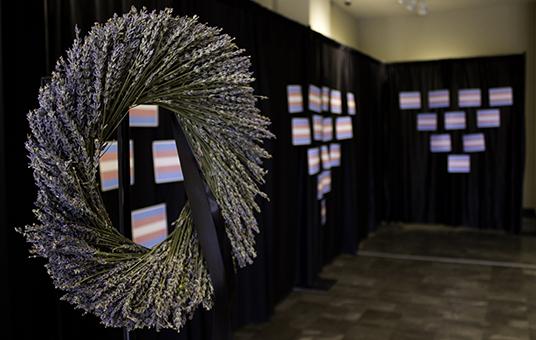Friday was Transgender Day of Remembrance, a day honoring victims of transphobic violence. In 2015, there have been at least 21 murders of trans people in the United States, including that of Mercedes Williamson in Alabama. Violence occurs as a result of intolerance and misunderstanding that is perpetuated by trans-invisibility. As allies, seeking trans representation and leadership is key to promoting trans acceptance and eliminating potential violence.
Trans individuals’ identities are invalidated throughout all aspects of life, and often in death as well. After Leelah Alcorn committed suicide in 2014, even her mother refused to call her by her chosen name and preferred gender pronouns. Her death was a result of this very lack of acceptance, and although she died as Leelah, her identity and experiences were not properly honored.
In many police reports, preferred pronouns are ignored and the acts of the offender are defended. According to the National Coalition of Anti-Violence Programs, in 2013 72% of hate crimes against LGBTQ individuals were against trans women and 90% were women of color. A common excuse for violence is “trans panic,” or an intolerant person simply being in the same location as someone they do not understand and becoming violent.
Because of intolerance toward trans individuals, their likelihood of finding housing is not promising. One in five transgender people have been turned away from potential housing because of their gender expression, and approximately one in ten has been evicted for the same reason. This is alarming because the rates of trans homelessness are as high as one in five, with one in three trans people being denied entrance to a shelter to assist them if they do become homeless.
In the workplace, trans folk are often met with the dilemma of which gender to identify as to make sure their financial security is not jeopardized. This creates an environment that often forces a person to disguise their identity for their own survival. These types of environments are not conducive work spaces. Because of how documentation operates on the gender binary, official IDs allow those examining them to judge whether or not a person fits the listed gender. This can cause confusion that leads to public humiliation. Shadi Petosky’s “TSA Nightmare” details her airport experience of being detained for several hours and publicly shamed because her ID did not match the “anomaly” that was her body. This is a constant reminder to trans people that their gender expressions are not recognized or welcomed.
Seemingly innocuous statements and sentiments such as something like “Caitlyn Jenner’s boobs are better than mine!” or looking at pictures of trans-identifying individuals to see how “well” they pass (as cis) and giving them a mental “congrats!” are all transphobic and perpetuate the idea that gender presents a certain appearance.
Also problematic are questions about whether or not a trans person has had “the surgery” in an attempt to “legitimize” their gender. Some will argue that to them, transition “does not count” without surgery. This is irrelevant however because gender does not exist on a binary and is not defined by our genitals, sex or biological makeup. It is not our responsibility to validate or invalidate another person’s definition of themselves.
Trans representation is not only lacking around those who do not understand or who refuse to be aware, but in inclusive movements and spaces. A well-known example of this is how the recent film Stonewall portrayed the Stonewall Riots as being led by mostly gay white men when there were actually many trans people of color and drag queens, such as Marsha P. Johnson and Sylvia Rivera, organizing and leading.
Another example of trans erasure in seemingly progressive environments is the ceremony held in honor of a trans woman who was murdered because of transphobia. Islan Nettles’ murder was being honored by LGBT activists and progressives who did not seek trans leadership or guidance. Considering trans people would be the most qualified in terms of relating to the life and experience of a trans woman, it was unfair to exclude them in the vigil.
In response to the issue of “allies” failing trans folk, the Trans Women of Color Collective (TWOCC) was formed. We should use the creation of the TWOCC as inspiration moving forward, as it exemplifies a way to create real change under the leadership of the people our movement says it’s for. If there are trans issues or honors, we should make space for trans folk to speak, remembering to never speak over or for them.
Out of the Black Lives Matter (BLM) movement has come #BlackTransLivesMatter, which provides space within the growing BLM movement for trans people to fight for their issues and to join in and #SayHerName. The recent demonstration led by the We Are Done coalition was clear in indicating that trans issues, and all issues regarding identity, would be included in the list of demands. This creates visibility while also not overstepping.
Being inclusive of trans folk should not be a check on the list to maintaining the appearance of being intersectional. These are real experiences by real people and they deserve the utmost respect and belief for their stories. Let us honor victims of anti-trans violence, and support actions that will increase visibility and trans voices.
Lindsay Macher is a junior majoring in chemical engineering. Her column runs biweekly.









